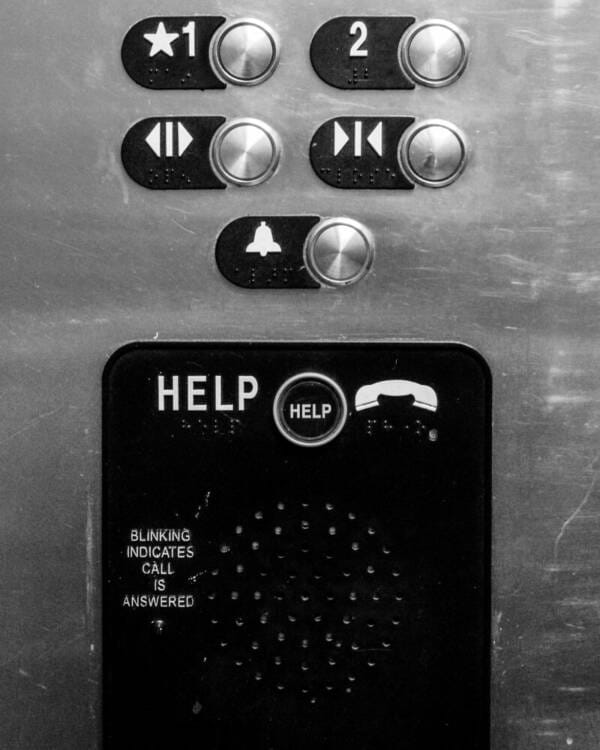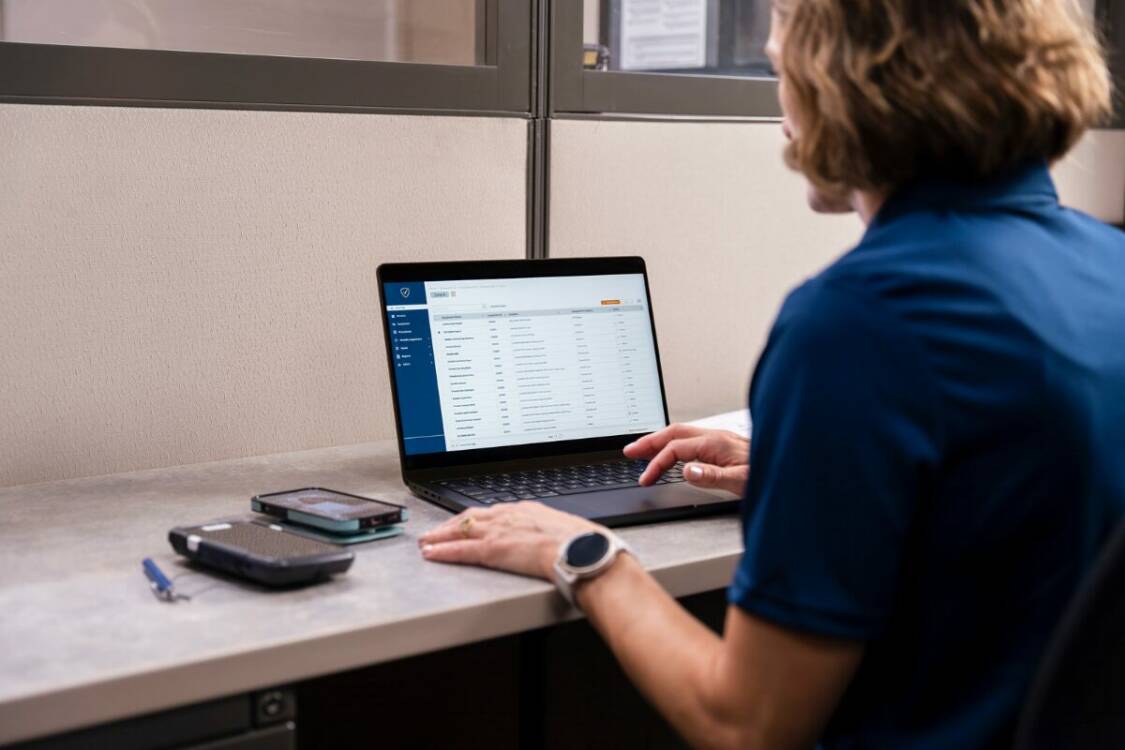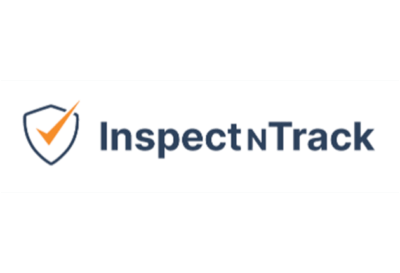This article offers detailed insights for performing inspections on emergency phones and radios in elevators. It explains why inspections matter, provides useful tips, and expands on the benefits of using software for inspections.
Intro: Emergency Phones and Radios in Elevators
What is an elevator emergency “red” phone?
Emergency phones and radios in elevators are communication systems that allow passengers to directly contact emergency personnel in the event of an emergency, such as an elevator malfunction or power outage.
Why is it important?
These devices are significant because they provide a vital lifeline for trapped individuals, ensuring timely assistance and guidance during emergencies. By enabling two-way communication with responders, emergency phones and radios play a critical role in enhancing passenger safety and ensuring compliance with building safety codes.
Why Elevator “Red” Phone and Radio Inspections Matter
Regular inspections of emergency phones and radios in elevators are essential to ensuring passenger safety. These systems are a lifeline during emergencies, providing critical communication between trapped individuals and emergency responders. If they malfunction, passengers may be left without assistance in potentially life-threatening situations, such as fires, power outages, or mechanical failures.
Inspections ensure that the systems are functional, accessible, and compliant with safety codes like ADA and ASME A17.1. By conducting routine checks and maintenance, building owners and operators can prevent failures, reduce legal liability, and enhance the overall reliability of their elevator systems.
Key Components of Elevator Phone & Radio Inspections
When performing inspections on elevator emergency phones and radios, there are some key elements to check. By verifying that these elements function properly, building owners do their part to encourage safety.
Inspections of elevator emergency phones generally involve the following steps:
- Activate multiple phones: Simultaneously activate two or more phones to make sure that the calls actually go through from the elevator, as would be necessary during a critical situation.
- Verify location and cab numbers: Request the emergency operator to confirm the specific location and cab numbers.
- Test callback functionality: Use the emergency responder’s phone to ensure that the on-site responder can call back into the elevator without delay.
- Ensure two-way communication: Confirm that both testers are able to engage in clear, two-way communication with the emergency operator. This would be vital in an emergency.
- Check for clear audio and sound quality: While on the phone with an operator, listen to make sure that there aren’t any issues with inaudible or scratchy audio.
- Inspect for compliance: Follow along with regulatory codes to be sure that the elevator emergency phone is up to code. When it comes to compliance, the most essential codes to know and follow are ASME A17.1/CSA B44, NFPA 72, and the ADA.
If any of these steps fail, take steps to remedy them promptly. Any issues left unattended could prove catastrophic in the event of an elevator malfunction, fire, or other disaster.


Benefits of Diligent Emergency Phone and Radio Inspections
Consistently keeping up with an inspection schedule can be challenging. Here are some of the benefits that come from perseverance in emergency phone and radio inspections.
Preventing Accidents: Regular emergency phone inspections catch potential issues before they become hazards. This results in preventing accidents and injuries. This proactive approach safeguards both building workers and elevator users from costly consequences.
Compliance: Many jurisdictions and safety standards mandate routine inspections of the emergency phones and radios in elevators. Complying with these requirements not only avoids legal penalties but also demonstrates a commitment to user safety.
Cost Savings: Timely identification of problems through inspections can extend the lifespan of emergency equipment in elevators. This reduces the need for frequent replacements, ultimately saving money in the long run.
Enhanced Worker Confidence: When employees know that their safety equipment is well-maintained and routinely inspected, their confidence in their own safety increases, resulting in improved morale and productivity.
With benefits like this, companies would be smart to make elevator inspections a priority.
How to: Creating an Effective Inspection Program
The following 4 factors can be used to establish a functional safety program for elevator inspections.
Inspection Schedule: One aspect to consider when developing a safety program is how frequently inspections should be performed. In the case of elevator emergency phones, it is required that inspections occur at least annually, however, many recommend performing checks every 4-6 months. Consider this along with various factors such as the manufacturer’s recommendations, usage intensity, and environmental conditions when setting up an inspection schedule.
Trained Inspectors: In order for inspections to be truly effective, they should be conducted by trained personnel. These individuals should have a comprehensive understanding of elevator communication systems and be able to identify potential issues.
Documentation: An effective inspection program will also feature proactive and accurate reporting of any maintenance, servicing, or inspection activities. Documentation should include details such as dates, findings, and actions taken. This form of record keeping can serve as evidence of compliance and a reference for future assessments.
Software: Inspection software brings all the components together by keeping an accurate inventory of elevator emergency phone/radio equipment, assigning proper inspection frequency, displaying digital inspection forms to guide the inspector through the right steps, and keeping inspection records for compliance reporting.
Best Practices for Maintaining Elevator Emergency Phones and Radios
To ensure compliance with safety codes and the continued effectiveness of emergency communication systems, it is important to follow these best practices:
- Regular Inspections and Testing: Conduct routine inspections to ensure that the emergency communication systems are functioning properly. Testing should include verifying that the phone connects to emergency personnel, the system’s volume is adequate, and the visual and audible signals work correctly.
- Up-to-Date Monitoring: Emergency communication systems should be monitored around the clock by trained personnel. This ensures that all emergency calls are answered promptly and handled effectively.
- ADA Compliance Checks: Regularly check that the system complies with ADA requirements, ensuring accessibility features like volume control, visual signals, and text-based communication remain functional.
- System Upgrades: As technology advances and safety codes evolve, it’s important to upgrade outdated systems to meet new standards. For example, upgrading from older, manually operated emergency phones to modern, hands-free, ADA-compliant systems can significantly improve passenger safety.
- Integration with Building Systems: Ensure that the elevator emergency communication system is integrated with the building’s fire alarm and security systems. This allows for coordinated emergency responses and ensures the system remains operational during power outages or fire alarms.
- Utilizing Software: Software can be used to simplify the inspection process by reducing the time needed to perform inspections, organizing documentation, and more. Because of its benefits, many companies are shifting to further integrate software into their safety efforts and programs.

InspectNTrack’s Elevator Emergency Phone/Radio Inspection Software
InspectNTrack offers an advanced inspection software that can be used for a wide variety of inspections on fire and life safety equipment including the emergency phones and radios in elevators. This SAAS software solution offers an innovative approach to safety that increases efficiency and accuracy of equipment inspections for elevator communication systems. It can manage the inspections of elevators on their own or as part of a larger inspection program, with other fire and life safety equipment.
Customer-Loved InspectNTrack Features
When it comes to safety inspections, InspectNTrack is changing the game. Here are some of the most loved InspectNTrack features for elevator emergency phone and radio inspections and fire safety.
- Mobile App: Because there is a mobile InspectNTrack app, our software can be used on any device that runs on iOS, Windows, or Android. It works with mobile phones, desktop computers, tablets, handheld scanners and more. This means that workers can carry the technology with them on the job site, in their pocket, vest, or hand. This helps users stay up-to-date on the most recent data and remain situationally aware.
- On-the-Go Reporting: A cool feature of InspectNTrack’s software is the fact that it doesn’t need wifi to function or update. Inspections can be completed from any mobile device with no data connection required. This enables users to perform elevator inspections and record them digitally in real time, therefore removing the hassle of papers and filling out reports manually. It can be used in hazardous areas, remote areas, and everything in between.
- Organized Documentation: INT software offers a centralized data platform, meaning that all data from elevator inspections can be stored in a single place. This helps to keep data organized and easily retrievable in the event of an audit. Within seconds, reports can be pulled up, shared, or printed.
- User-friendly Interface: InspectNTrack is known for having a user-friendly interface, which is crucial for widespread adoption within an organization. Thanks to images, clear wording, and easily navigable pages, INT software is an intuitive tool for most users. This makes it easy for workers, supervisors, and safety professionals to access and utilize the features seamlessly. With a user-friendly interface, it is easy for workers to perform and record their inspections.
- Dynamic Scheduling: InspectNTrack software can be used to stay up to date on both inspections and required maintenance. The system automatically schedules upcoming inspections for equipment and systems to ensure that they are routinely completed. Scheduled inspections can be made according to company criteria. For example, inspections can be grouped together based on area, timing, or shifts. Additionally, an assignment can be completed by one person, or technicians can work together to complete an assignment. This feature helps remove the pain of managing various inspection schedules for different kinds of equipment, making compliance that much easier.
- Action Triggers: If there are any reported issues during inspections, the system will notify users of needed actions. These notifications encourage a prompt response to issues and help promote safety. Workers and managers alike can see what tasks need to be done and coordinate accordingly.
There are many other aspects of InspectNTrack that make it the ideal valve inspection app. To learn more about other features, talk to a specialist here.

Advantages of Using Software for Emergency Phone and Radio Inspections
As mentioned before, there are many reasons to conduct inspections on elevator emergency phones and radios, including ensuring that systems function properly, to prevent accidents and to maximize the lifespan of equipment. However, this section will highlight the advantages of using software to perform those inspections. All of these benefits and more are available to those who use InspectNTrack’s valve inspection app.
- Easy Documentation and Reporting: For any safety program to thrive, it needs to have a sense of order. With software, you can leave behind the hassle of manual reporting and reap the benefits of a structured system. There’s no need for Excel spreadsheets, loose papers, or calendars for inspection scheduling. This makes it much easier to record elevator inspections as they occur, keep the data organized, and retrieve information when necessary.
- Improved Transparency: Transparency is a key component of any robust safety inspection program. By utilizing InspectNTrack software, inspectors can generate detailed, timestamped digital reports that include photographs, notes, and any identified issues. Since the software automatically updates without wifi, team members can access this data in real time. This transparency fosters trust among stakeholders and ensures that necessary actions are taken promptly to address safety concerns.
- Increased efficiency: Efficiency is a high priority for virtually all companies and organizations. Thankfully, software is changing the game when it comes to efficiency. Automation and digitization help to significantly streamline the inspection process. Instead of relying solely on manual checks, inspectors can use software to schedule inspections, access digital checklists, and more. With InspectNTrack’s emergency phone inspection app, it is quicker and easier than ever before to perform inspections.
- Greater Accuracy: Accuracy is another crucial aspect of cultivating a safe workplace. One of the biggest ways that INT software fosters greater accuracy in reporting is the fact that it is all digital. This helps to reduce human error, because there aren’t any misplaced or lost documents. All system data and history is stored in a centralized platform, therefore reducing the risk of lost information.
- Simplified Compliance: Thorough reporting and documentation are needed for companies and organizations to be able to prove their compliance during audits. InspectNTrack’s emergency phone inspection app simplifies compliance by providing automated scheduling of inspections and action triggers for identified issues that need attention. These features help managers ensure that an inspection schedule is kept up with and that problems are addressed, making OSHA compliance that much easier.
Get Started With Our Software
Want to learn more about what InspectNTrack is and how it can help with safety inspections of elevator communication systems? If so, connect with our team by requesting a demo! Our team of specialists are happy to set up a meeting to help you determine if INT software is right for your company’s needs. We believe in the power of our product to change the way safety is approached in the workplace and want to answer any questions you have. You may have come looking for elevator emergency phone inspection software, but InspectNTrack can do a whole lot more than that. We have a multitude of solution offerings, and hope that you will give us the chance to show just what InspectNTrack can do!
Conclusion
Emergency phones and radios in elevators enable passengers to directly contact emergency personnel during critical situations. In this way, they are a tool for safety. Because of their safety-promoting role, it is imperative that communication systems in elevators be properly cared for. Some best practices for inspections include checking over key elements of the elevator system, establishing an inspection schedule, using trained personnel, properly documenting all actions, and utilizing software. InspectNTrack offers a premium software for performing inspections on elevator emergency phones along with many other forms of fire and life safety equipment. By capitalizing on INT software’s revolutionary features, users can reap a multitude of benefits. Potential benefits include simplified compliance, increased efficiency, and improved accuracy. For more information about the software product or the conversion process, speak to one of our professionals!

